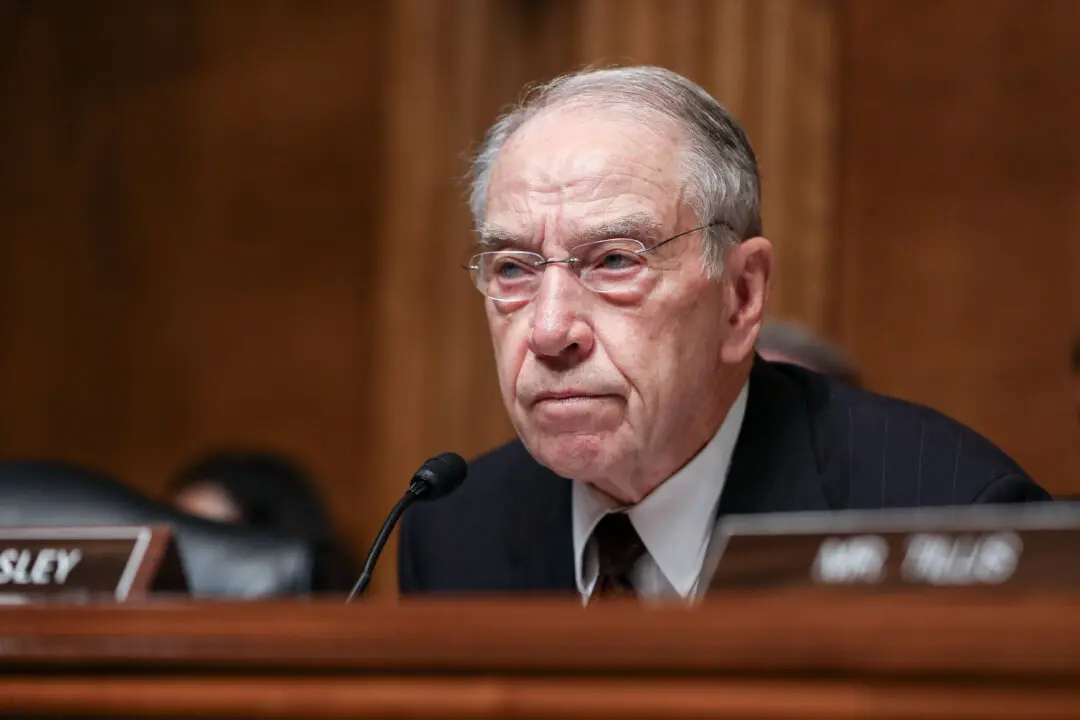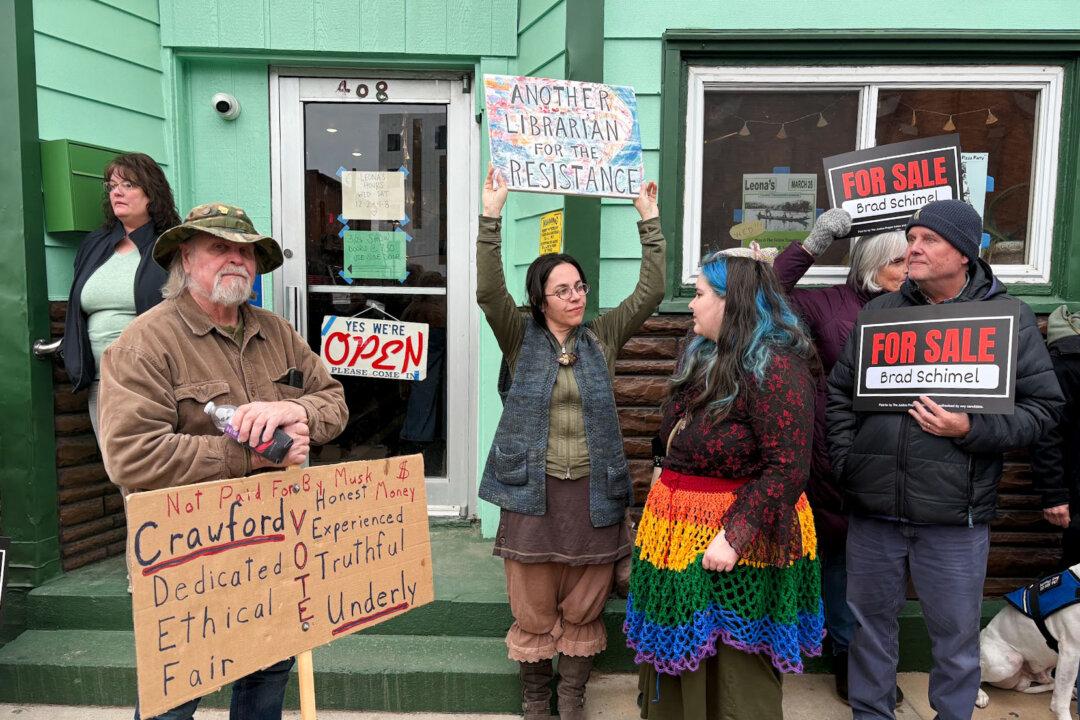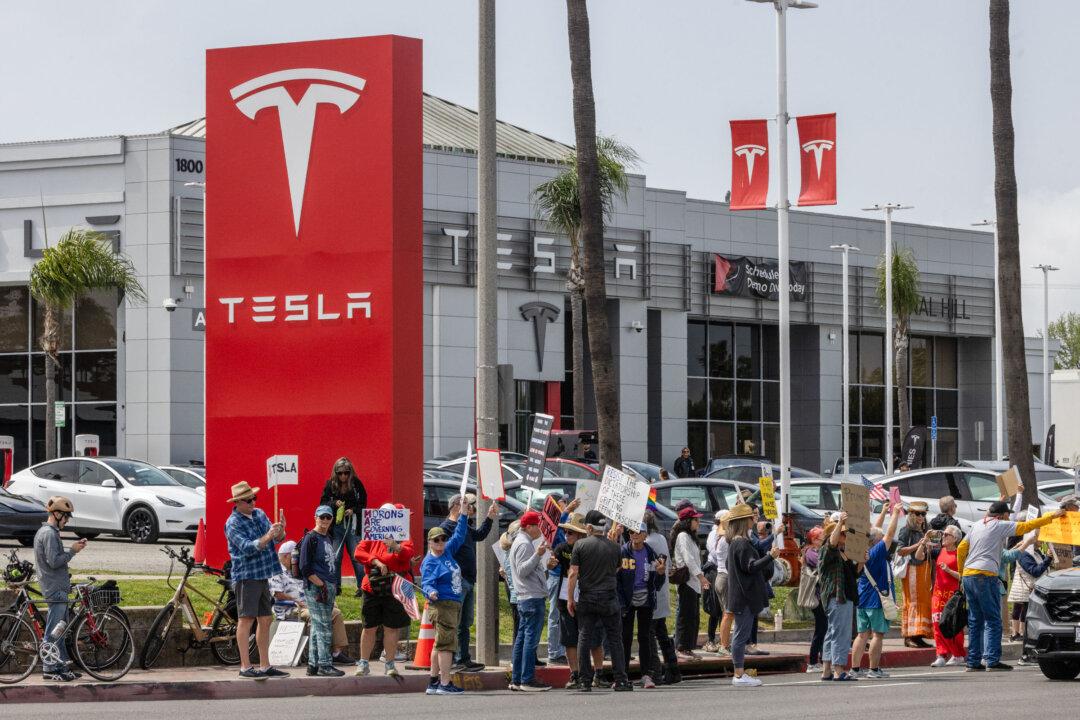On the road from Yuba City to Chico in the northern half of California’s heavily agricultural Central Valley, it’s hard to stop thinking about water—especially during election season.
Political signs advertise candidates’ positions on the issue, an indication of its virtually unmatched importance to the people and communities between the Sierra Nevadas and the California Coast Ranges. One poster along the road in late September read, in order, “Water, Jobs, Liberty.”

Rep. Doug LaMalfa (R-Calif.), the man behind the poster, understands the politics of water.
A member of the House’s Committee on Agriculture and the ranking Republican member of its Conservation and Forestry Subcommittee, he’s also a fourth-generation rice farmer.
“This land has been in our family since 1931,” LaMalfa told The Epoch Times’s Roman Balmakov during a Sept. 17 interview on his farm in rural Oroville. His children are the family’s fifth-generation farmers.

LaMalfa is currently farming roughly 1,800 acres, less than usual because of cutbacks to his water allocation. Water levels in the lakes that supply his farm have been low.
There’s a drought, he acknowledged. Yet he disputes the claim that it’s the worst drought in 1,200 years. While the early months of 2022 were extremely dry, October and December 2021 were marked by heavy precipitation–including record-breaking snowfall in the Sierras during late 2021.

LaMalfa thinks the state is playing up the drought so that the governor can use emergency powers to cut water to senior water-rights holders—those who are last in line to lose their water in the event of cuts.
For example, some senior water-rights holders in the Sacramento River system have received just 18 percent of their typical water supply.
“Like you see with COVID, emergency powers go a long way toward making people do things they normally wouldn’t do or scaring them into doing it,” he said.
LaMalfa has an old water claim that allowed him to cultivate most of the rice he intended to this year. Yet he was able to show Balmakov a dry field on his property, left unplanted because some water to which he would normally be entitled was made unavailable.
“There’s that much less rice planted now that’s going to be on the market for people’s consumption,” he said.

“When they keep cutting the water, they’re cutting the food.”
That’s a particularly challenging problem this year. The Russia–Ukraine war has disrupted global food and fertilizer markets. Multiple countries, including India and Hungary, have placed restrictions on the export of grain or similar commodities.
LaMalfa pointed out that a large percentage of many American crops come from California. That includes the vast majority of the country’s tomatoes, artichokes, olives, avocados, grapes, and many others.
In his view, the current pressure on California’s farmers can be attributed to “layer on layer of environmental activism, and government being taken over by that type of activism.”

LaMalfa argued that good, well-intentioned environmental laws such as the Clean Air Act and the Clean Water Act have been abused.
Yet the conflict between environmental groups and farmers runs deeper than competing interpretations of federal statutes or water allocations during a particularly dry year.
The Biden administration supports a 30x30 plan to protect 30 percent of American lands and waters by 2030—an effort almost guaranteed to bring existing landowners into conflict with the federal government and environmental NGOs.
LaMalfa argued that the Biden administration’s vision is downstream of U.N. Agenda 21 and related plans. Many rural landowners see those efforts as geared toward urbanization on the one hand and rewilding on the other, leaving little room for farmers, ranchers, and what remains of America’s small towns.

“There’s a lot of things coming down the pike that are trying to change people’s natural behavior into what government wants and basically corralling us into small, tight spaces so we can be more easily controlled and taxed and made to stand in line and do what government wants,” he said.
“They’ve got kids scared to death [of] global warming and CO2.”
In and beyond the United States, the triumph of environmental activism in the halls of power has had dramatic real-world consequences.
Sri Lanka’s ban on conventional chemical fertilizer ultimately triggered food shortages and civil unrest. The country’s prime minister and president both resigned.

LaMalfa didn’t rule out the possibility of something similar happening in the United States.
“Even right now, I wonder what it’s going to be like with all the crops that weren’t planted this year in this country or the other areas of this country where the crops are struggling,” he said.
He believes that environmental, social, and governance criteria and similar systems for imposing environmentalism on business and the state could have very grim results.
“There'll be a whole lot of people who can’t get food under that kind of thinking,” LaMalfa said.






